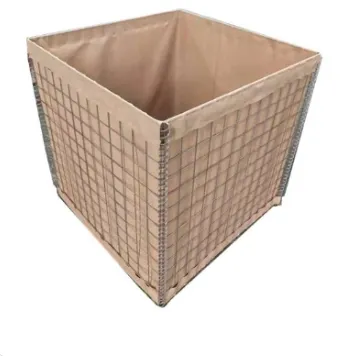When it comes to durable and reliable construction materials, gabion welded wire mesh stands out for its versatility and strength. This innovative product is increasingly used in various projects, ranging from landscaping and erosion control to architectural applications. With more than a decade of experience in the industry, I have witnessed firsthand how this material can transform projects with its unique properties and benefits.

Gabion welded wire mesh is characterized by its heavy-duty, galvanized steel wires that intersect to form a solid grid structure. This robust construction material is primarily used to create gabion baskets, which are filled with stones or other materials to serve various functional and aesthetic purposes. Unlike its woven counterpart, the welded mesh provides a more uniform shape and greater resistance to deformation, making it an ideal choice for projects that demand structural integrity and a streamlined appearance.
One of the primary advantages of gabion welded wire mesh is its exceptional strength. The welded joints enhance its ability to withstand heavy loads and resist environmental stressors, such as soil erosion, floodwaters, and wind forces. This makes it a superior option for retaining walls and embankments, which require a long-lasting solution that can endure the test of time. Furthermore, its rigid structure ensures stability and minimizes movement, which helps to retain its form even under pressure.

Expertise in utilizing gabion welded wire mesh involves understanding its flexibility in design and application. Landscape architects and engineers often employ gabion systems for their modular capacity, allowing them to customize structures to fit any landscape or requirement. This adaptability means structures can vary in height, length, and configuration, providing the freedom to address specific site challenges. Moreover, the natural aesthetic of stone-filled gabions blends seamlessly into natural environments, providing not only functional benefits but also visual appeal.
gabion welded wire mesh
In terms of trustworthiness, gabion welded wire mesh has been consistently reliable across numerous applications worldwide. Its proven track record in projects such as riverbank stabilization, coastal protection, and road infrastructure speaks to its credibility and efficacy. The material's ability to complement eco-friendly initiatives further enhances its reputation. By allowing vegetation to grow between the mesh and stone, gabions encourage natural habitats and sustain ecosystems, aligning with modern environmental conservation goals.
From an authoritative perspective, businesses specializing in gabion solutions offer a wealth of knowledge, driven by years of research and development. As industry leaders, these companies ensure their products meet high standards of quality and safety, often exceeding industry regulations. Professionals looking to implement gabion welded wire mesh should consult these experts to leverage their insights and guarantee project success.
Trustworthiness of suppliers also plays a crucial role in the successful deployment of gabion systems. Reliable manufacturers provide detailed guidance on installation techniques and maintenance practices, ensuring the longevity of the structures. Moreover, they often conduct rigorous testing and quality assurance processes that provide peace of mind to clients and end-users alike.
In conclusion, gabion welded wire mesh is more than just a building material; it is an innovative solution endorsed by decades of engineering and architectural excellence. Its combination of strength, adaptability, and ecological compatibility makes it a preferred choice for structurally demanding and environmentally-conscious projects. By leveraging expertise and authoritative guidance, professionals can maximize the advantages of this exceptional product, delivering successful outcomes that stand the test of time. As the demand for sustainable and resilient construction materials grows, gabion welded wire mesh will undoubtedly play a pivotal role in shaping the landscapes of tomorrow.
 TEL:
+86-13102802206
TEL:
+86-13102802206
 Email:
fencenetting@china.com
Email:
fencenetting@china.com
 Language
Language
 TEL:
+86-13102802206
TEL:
+86-13102802206
 Email:
fencenetting@china.com
Email:
fencenetting@china.com
 Language
Language



